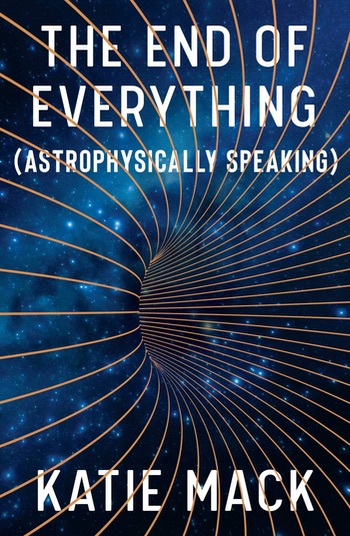Review: The End of Everything (Astrophysically Speaking)by Jeff Foust
|
| A Big Rip sounds like a particularly painful end of the universe, but such a fate is not imminent: cosmologists estimate the earliest a Big Rip could take place is in about 200 billion years. (Whew.) |
There are several possible ends to the universe that Mack, a theoretical astrophysicist at North Carolina State University, discusses in the book. In the “Big Crunch,” gravity halts the expansion of the universe and causes it to collapse upon itself, incinerating everything. But the existence of dark energy suggests that collapse won’t happen, and instead the universe will continue to expand indefinitely, reaching a state of maximum entropy; the “Heat Death” of the universe. But that dark energy could trigger a “Big Rip” that could, as the name suggests, rip apart galaxies, stars, and even atoms.
A Big Rip sounds like a particularly painful end of the universe, but such a fate is not imminent: cosmologists estimate the earliest a Big Rip could take place is in about 200 billion years. (Whew.) Mack, though, warns another end of the universe could take place at any time by a transition of the Higgs field, creating a “bubble of quantum death” expanding at the speed of light through the universe, instantaneously destroying everything in its path. She, though, cautions readers not to worry about it: not only is it unlikely, you’d never see it coming and never feel a thing. (Whew, as well.)
The end of the universe is certainly a heavy subject, and one that can involve advanced physics and mathematics. However, Mack avoids getting too technical even when discussing frontiers of cosmology and theoretical physics, and keeps it entertaining as well. There are humorous asides, including footnotes and the occasional ALL CAPS exclamation, that help the reader take the topic seriously, but not too seriously.
But why care about how the universe will end on timescales far behind the comprehension of the typical person? Mack, in the introduction, likens the experience of studying the end of the universe to the “Overview Effect” that astronauts experience when they look at the Earth from space, changing their mindsets. “Acknowledging an ultimate end gives us context, meaning, even hope, and allows us, paradoxically, to step back from our petty day-to-day concerns and simultaneously live more fully in the moment,” she writes. There are, these days, a lot of day-to-day concerns that occupy our thoughts, and contemplating the ultimate end can put things into perspective, or at least take our minds off them.
Note: we are temporarily moderating all comments submitted to deal with a surge in spam.
